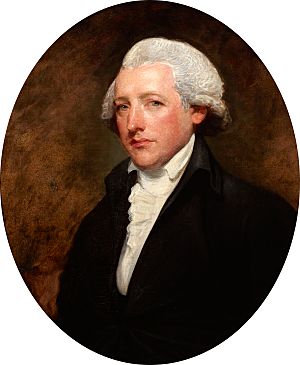William Cumberland Cruikshank facts for kids
Quick facts for kids
William Cumberland Cruikshank
|
|
|---|---|

portrait by Gilbert Stuart
|
|
| Born | 1745 Edinburgh |
| Died | 27 June 1800 |
| Occupation | Chemist |
William Cumberland Cruikshank (born 1745 in Edinburgh, died June 27, 1800) was an important British doctor and anatomist. An anatomist is someone who studies the structure of living things. He wrote a famous book called The Anatomy of the Absorbing Vessels of the Human Body. This book was first published in 1786.
Early Life and Work
William Cumberland Cruikshank was born in Edinburgh, Scotland, in 1745. He later moved to London in 1771. There, he started working as an assistant to William Hunter. Hunter was a very well-known anatomist of his time. Cruikshank helped Hunter with his studies of the human body.
Key Discoveries
Cruikshank made an important scientific discovery in 1797. He was the first person to show that a special substance exists in urine. This substance can turn into crystals. He also found that this substance would separate from the urine when nitric acid was added to it. This was a big step in understanding how the human body works.
Royal Society Recognition
Because of his important work and discoveries, William Cruikshank was chosen for a special honor. In June 1797, he became a Fellow of the Royal Society. The Royal Society is a very old and respected group of scientists in the United Kingdom. Being a Fellow means you are recognized as a leading expert in your field.

